
Hot springs in Japan, known locally as onsen, are a natural fixture in most parts of Japan that often appear in olden myths and legends about onsen discovery.
In European lands, they are often thought of as a treatment, whereas hot springs in Japan are viewed as places of natural scenery and serenity that nurse the soul. Whatever the case, it is abundantly clear that they are dear to the hearts of many, whether young or old.
Japan's onsen culture dictates that bathing doesn't start or stop at the dip. What, then, should one do to enjoy the onsen experience fully? We picked the brains of an expert on the subject and received some surprising answers!
- Table of Contents
-
- What does a "Japanese onsen" mean, anyway?
- How to bathe at hot springs in Japan - the basics
- Come out of the onsen for a while when you find yourself sweating profusely
- Recommendations to help with fatigue and beauty care
- Make your onsen trip a stylish one by following conventional etiquette!
- Book an unforgettable onsen experience!
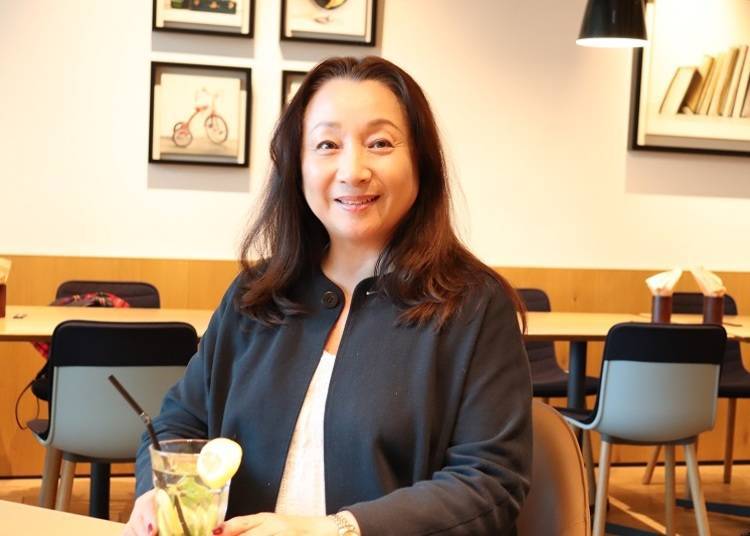
Onsen beauty researcher Hiroko Ishii travels everywhere and often stays in lodges to pursue the beauty and health benefits of onsen hot springs in Japan. There's no better onsen and trip specialist we could consult for a deeper look into the Japanese onsen culture.
Ishii: "Japanese love to sense seasonal smells and sounds. When surrounded by peaceful tranquility, it's easy to recall things in life we may have overlooked. One of the few places left where we can still do that is the onsen. If you find yourself in a Japanese onsen one day, why not try taking up the Japanese way?"
And what exactly is the "Japanese way"? Let's find out!
What does a "Japanese onsen" mean, anyway?
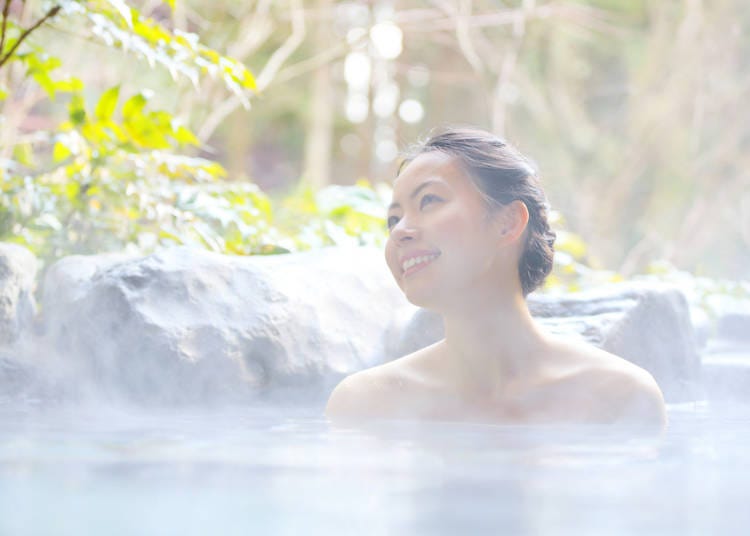
The standard for European lands is for men and women to dip in a hot spring together while wearing swimsuits.
However, at hot springs in Japan, whether you're at the women's bath, men's bath, or mixed bath, you're expected to enter the onsen completely unclothed. Before dipping yourself into the onsen proper, you're also expected to clean your body first by taking a shower.
Ishii: "This is also a symbolic action to purify our bodies by scrubbing the dirt of our mundane cares away. It's appropriate for us to reset our bodies, so to speak, before entering an onsen that was gifted to us by nature itself. This way of thinking is in line with Buddhism in Japan and the local culture as well. It's not just about manners and physical cleanliness, though there is that aspect as well, of course."
This is exactly what's so intriguing about Japanese onsen - that it's deeply rooted in Japanese culture. If you ever find yourself wondering why some things are supposed to be done in a certain way, look for the cultural link! This will add meaning to the entire experience.
How to bathe at hot springs in Japan - the basics
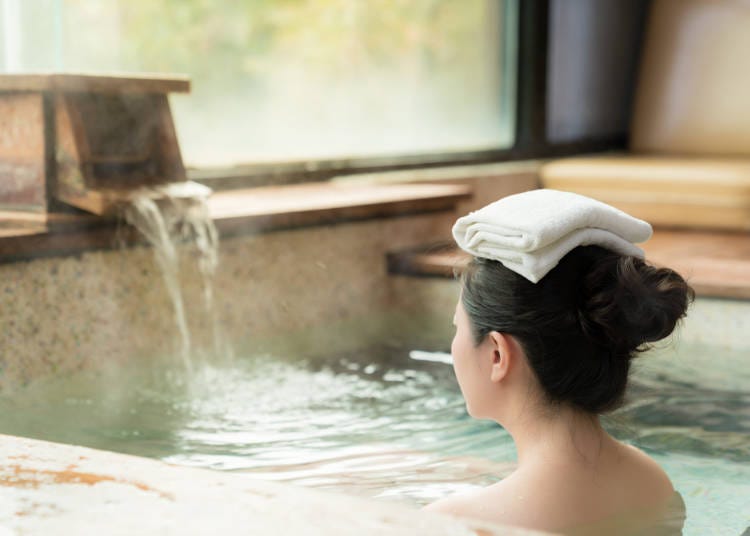
In brief, there are four basic points to note when going to a Japanese onsen.
(1) Hydrate well before entering the onsen.
(2) Shower and clean your body first.
(3) Don't forget the kakeyu (pouring of hot water over body).
(4) Take off any towels before entering the onsen.
The most comfortable onsen temperature for the Japanese is between 39℃ to 42℃ (102°F to 107.5°F). If your body is relatively cool before entering a body of water with such a high temperature, the water's heat becomes much more pronounced. That's why you should remember to pour some kakeyu on yourself first before slipping into the pool.
Ishii: "Kakeyu refers to water from the onsen you'll be entering that you scoop up with a bucket to pour over your body after showering. This prompts your skin and body that the onsen you're about to enter is around this temperature."
Kakeyu should be poured on your body from the regions farthest away from the heart to the nearest. All in all, ten scoops of water should do the trick. The recommended sequence is:
Right foot → left foot → right knee → left knee → right hip → left hip → stomach → right shoulder → left shoulder → back
Ten is just an estimate and not an absolute number you must follow. Any number of scoops about that amount should suffice. Since the purpose is to get your body used to the heat so it becomes easier for you to enter the onsen, some warm-up exercises may be good for the body.
After taking a shower and pouring kakeyu on yourself, it's finally time to properly enter the onsen. Towels are not allowed to in the onsen pool, reflecting the Japanese attitude towards keeping what's already been cleaned, clean. In that case, you may be wondering, where, then, should you leave the small towel you brought in from the bath hall?
Ishii: "If you really want to soak in the Japanese atmosphere, wrap it around your head! Since the towel is still moist with cool water, it will help to prevent blood from rushing to your head as you lower yourself into the onsen. For those who are not confident of wrapping the towel around their heads properly, you can simply leave it on a shelf or anywhere else."
Come out of the onsen for a while when you find yourself sweating profusely
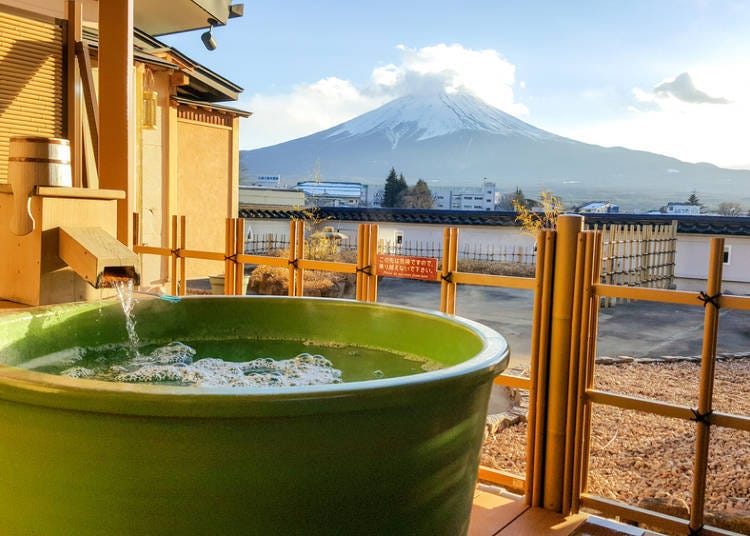
Each of the hot springs in Japan has its own recommended course, but the most important recommendation would have to be to not soak in the onsen for too long at one go.
Japanese onsen are slightly hotter than usual and full of mineral components. It's important to remember to come out of the onsen once in a while for a rest.
Ishii: "When you try to deep-fry chicken meat into karaage (deep-fried food) at one go, notice that only the batter gets fried whereas the insides are soggy and half-baked? It's the same thing with entering a hot bath. It definitely raises the temperature of our skin, but we're still not quite warmed up inside yet. All the good things that people extol onsen for - boosted immunity, better health and beauty through improved blood circulation - depend on whether we can raise our core body temperature by 1°C (33.8°F). That's why we go for a second dip. Back to the karaage analogy: When deep-frying food, we dip the ingredient in very quickly, take it out, and then dip it again for a longer time, until the insides are cooked. This makes the batter crispy while locking the food's juices within it. We should be doing something similar for the onsen as well for its full benefits."
So the lowdown is this: Rather than try to soak for a full 15 minutes at one go, break it up into three five-minute chunks. This increases the effect of the onsen's heat on your body's core by threefold! Or you can simply get out once you find yourself getting slightly sweaty.
Ishii: "The onsen's components and temperature, a person's constitution and health condition - all these differ from person to person, so there's no hard and fast rule for exactly how many minutes you should soak your body. However, most start getting slightly sweaty at the five minutes mark, so that's a good reference point to stick to. Five to 10 minutes after you first climb into the onsen is a good time to start thinking about getting out for a while."
Depending on the onsen you visit, you may also find some bubunyoku - body parts bath facilities that pamper specific parts of the body, like a foot spa or hand spa. The benefit of these bubunyoku is said to be that simply warming up this particular body part will improve blood circulation around the whole body. For those yearning to have longer soaks in the onsen, going for a bubunyoku or two may be just what you need to satisfy that desire. The foot or hand spa will also help you to get used to the temperature of the onsen water.
Recommendations to help with fatigue and beauty care
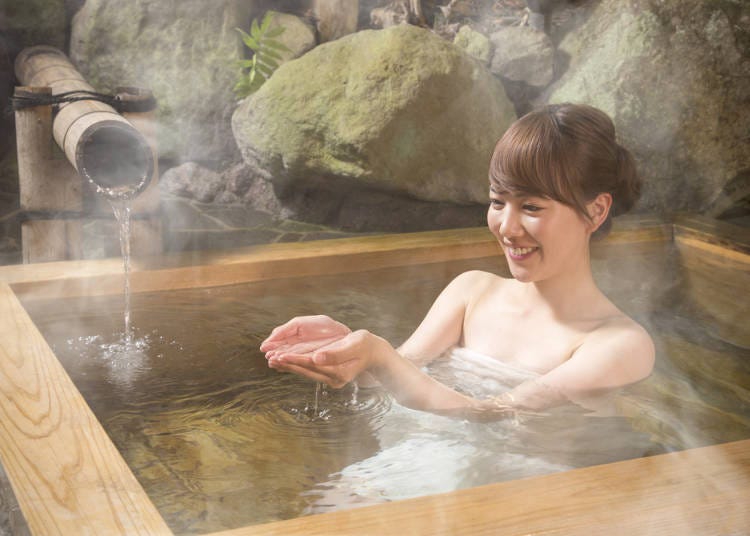
If you're battling fatigue, we recommend the "onrei kōgoyoku," or contrast bath. "After coming out from a hot onsen, you can use a cold water bath to cool down or take a lukewarm shower. If you find it difficult to shower your entire body, just your hands and feet will do.
After that, ease yourself back into a warm onsen. This will improve your blood circulation and metabolize the substances causing fatigue away quickly, refreshing you as a result," is Ishii's explanation about this. I guess this is an onsen course that's highly recommended for those trying to slim down too!
On the whole, Japanese onsen contain components that leave the skin looking fresh and feeling great. After you emerge from a good onsen soak, you'll feel like your skin has been reset - ready to take on new challenges. Beauty products will be absorbed easily by your skin during this period, so we recommend going through your skincare regime in the dressing room of the onsen if you can! There's no need to use anything special - just what you usually apply. The products will be absorbed more quickly than usual, and their effects will be more evident as well!
Ishii: "If there's a hot spring tap dispensing fresh onsen water at a beauty onsen, get a bucket of water from there and wash your face with it! Some people try to soak without letting a single drop of onsen water touch their faces, but that's such a waste of good water! Of course, the water from the tap will be really hot, so wait for it to cool down first or dilute it with cool water. Or you could also dip your towel in the bucket and turn it into an onsen steamed towel to wipe your body with."
Definitely something worth a try! However, before you start heading towards that hot spring tap with a purposeful stride and a bucket in tow - check to see whether it's really fresh onsen water and not recycled water first!
Make your onsen trip a stylish one by following conventional etiquette!

Basic etiquette at hot springs in Japan encompasses not just the things you personally do, but having consideration for those sharing the onsen premises as well.
To keep the onsen water fresh for everyone, when you're getting into an onsen, never jump in suddenly; never let your towel touch the water in the pool, and never let the water cover your head. We also do NOT recommend taking a sip of the onsen water. An onsen is not a swimming pool, and while it's understandable you may have the urge to start swimming in a large onsen pool, definitely suppress that urge and focus on enjoying a calm and peaceful soak instead!
Hot springs in Japan are also known to be places of polite conversation. If you meet the eyes of another onsen-goer, smile and greet them with a subdued "Konnichiwa (Hello)!" When you're getting out of the onsen, bow and say, "Osakini (Goodbye)!"
Keeping the dressing room comfortable for all and free from random splashes of water is every onsen-goer's personal responsibility as well, especially after the soak. That's why there is a large bath towel and a small towel. The large bath towel is to be left in the dressing room for wiping your body with after your soak.
As for the small towel that you bring to the onsen itself, it can be used to wipe your back and feet before you step back into the dressing room. So now, when you see someone quickly wiping their body with the small towel at the end of their soak, you'll be able to think proudly to yourself, "This person knows how to onsen!" while being secretly impressed!

Ishii: "As mentioned before, the onsen is a place for all to enjoy peace and tranquility, so please keep that in mind, whatever you do! You did come here to settle down in both body and soul, after all. The calmness that results will allow you to open up your senses to the flow and sound of the water, the singing of the birds, the gentle crashing of the waves if you're near the seashore and the smell of greenery. Comforting your senses with these natural gems is an important part of an enjoyable onsen experience."
In these days where we're surrounded by smartphones and endless noises every waking hour of the year, we slowly lose more and more of the "blank slate of life" we are given each time we find ourselves with nothing to do - a blank slate that we can work on to our personal improvement.
Hot springs in Japan are a place where you can get some of those "blank slates" back, so sit back, relax, and enjoy the peace and quiet you never knew you needed!
Written by: Naho Jishikyu
Book an unforgettable onsen experience!
Make your trip extra memorable by booking one of these recommended experiences on our partner site, Rakuten Travel Experiences!
*Prices and options mentioned are subject to change.
*Unless stated otherwise, all prices include tax.
Popular Tours & Activitiess
Recommended places for you
-

Senso-ji Temple
Temples
Asakusa
-

Ueno Zoo (Ueno Zoological Gardens)
Zoos, Aquariums & Botanical Gardens
Ueno
-

TOKYO SKYTREE®
Landmarks
Ryogoku / TOKYO SKYTREE(R)
-

Naritasan Shinshoji Temple
Temples
Narita
-

Tokyo Metropolitan Government
Landmarks
Shinjuku
-

The Imperial Palace
Other Architecture
Tokyo Station
-
Ad

(Opening in Jan 2026) 'THE SUMO LIVE RESTAURANT HIRAKUZA GINZA TOKYO!' 5 Exciting Ways to Experience the World of Sumo!
-

How to Get Don Quijote's Exclusive 2025-2026 Winter Gift (+Tax-Free Savings)
-

Japan’s Shinkansen Is About to Change Travel in an Unexpected Way
by: Guest Contributor
-

This Winter, Godzilla Takes Over Haneda Airport
by: Guest Contributor
-
Ad

Preserving the Beauty of World Heritage Site Shirakawa-go for the Future Through Responsible Travel
-

First Japan Cherry Blossom 2026 Forecast Announced! Here's When & Where to See Sakura in Japan
Inspiration for Accommodations
-

Enjoy Mt. Fuji from the Comfort of Your Room! Recommended Ryokan with Mt. Fuji View
-

Stay Near the Cherry Blossoms! Hotels for Cherry Blossom Viewing in Tokyo
-

Family-Friendly Hotels with Free Shuttle to Disneyland: Convenient Access for a Magical Stay
-

Top Ranked Hakone Hotels with Mt. Fuji View: Enjoy Stunning Scenery from Your Private Space
-

Convenient Tokyo Hotels with Airport Shuttle: Ideal for Families and Heavy Luggage
-

Stunning Tokyo Tower View Hotels: Enjoy Spectacular Scenery from Your Private Space
-

Convenient Asakusa Hotels with Kitchens: Ideal for Extended Family Visits
-

Experience Luxury: Hakone's 10 Best Five-Star Accommodations
-

Enjoy Mt. Fuji Autumn Leaves! Top Hotels Near the Popular Autumn Leaves Corridor
-

Experience Hakone Fall Foliage from Your Room with Stunning Views
-

Spending Wonderful Time Alone in Shibuya - Free Cosmetics and a Hundred-Yen Bus!
-

Top 5 Tokyo Hot Springs Where You Can Soak Up Japanese Culture!
-

Atami 1-Day Itinerary: Exploring Japan's Castle & Hot Springs Resort Town Near Tokyo!
-

Kichijoji – Explore Tokyo’s Top-Rated Stylish Suburb in Half a Day!
-

Onsen Ryokan Yuen Shinjuku: Enjoy An Authentic Onsen Stay Right in The Heart of Tokyo!
-

Simple Onsen Beauty Tricks Anyone Can Try at the Hot Spring - Recommended by a Japanese Beauty Researcher!
- #best ramen tokyo
- #what to buy in ameyoko
- #what to bring to japan
- #new years in tokyo
- #best izakaya shinjuku
- #things to do tokyo
- #japanese nail trends
- #what to do in odaiba
- #onsen tattoo friendly tokyo
- #daiso
- #best sushi ginza
- #japanese convenience store snacks
- #best yakiniku shibuya
- #japanese fashion culture
- #best japanese soft drinks












